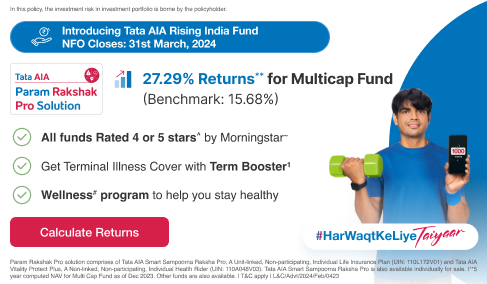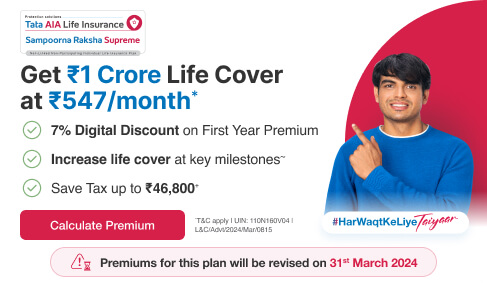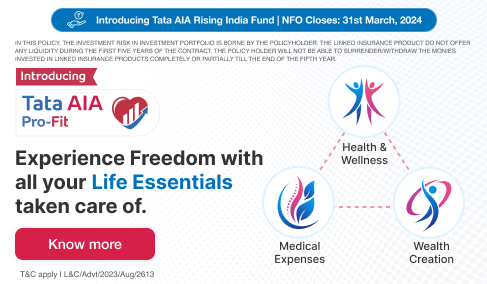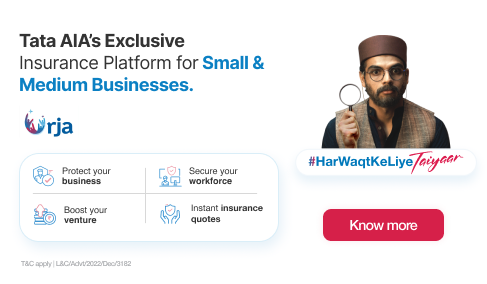All You Need to Know About ULIP Policies
5-July-2021 |
There are many different ways to grow wealth, and investing in the market is one of the ways to make sure your money grows at a much faster rate than traditional means of investment, like fixed deposits. ULIPs (Unit-Linked Insurance Policies) are a great way to get two birds with a single stone - life insurance and investing in the stock market to grow your wealth. Anyone looking to grow his/her money while also subscribing to life insurance should consider a ULIP policy. Long-term financial goals like a child’s higher education or marriage are great goals to have for a ULIP policy. This is because not only do you give your investment time to grow and mature, but you also make sure your child will have his/her financial needs met if something untoward happens to you.
.jpg)
What are ULIP policies?
Unit-Linked Insurance Policies are primarily insurance policies. How they differ from regular insurance policies is in two major ways. The premium you pay towards a ULIP policy is divided, and one part goes towards your life insurance cover, like a regular insurance policy. The remaining premium goes towards investing in debt, equities, or a combination of debt and equities. The combination of the investment depends on how much risk you are willing to take and what your long-term financial goals are.
How should your ULIP policy be configured?
There are multiple ways to make your ULIP policy work for you by tweaking the amounts you put into the various components of the premium you pay. Let us examine the components one at a time.
The life cover offered by a ULIP scheme is usually a minimum of 10 times your annual premium amount. For example, if your annual premium is ₹ 10,000, the life cover provided to you will be a minimum of ₹ 1 Lakh. This figure can be up to as much as 40 times the annual premium. Taking the same annual premium as before of ₹ 10,000, this will mean a life cover worth ₹ 4 Lakh.
The investment component of your premium can go into either equity or debt funds. Equity funds are what we think of as ‘shares’, like shares of companies. They are higher risk than debt funds, but investing in a good equity fund will also offer much higher returns. Debt funds have fixed returns, but they are low-risk because they are investments in instruments like treasury bills, government securities, corporate bonds, etc.
The configuration of investment of your ULIP policy premium is something that you will decide based on your long-term financial goals. Whether you need more life cover, are willing to take more risk for higher returns, or you’d rather play it safe for lower but more assured returns.
What benefits do ULIP policies provide?
ULIP policies help you invest in two different things at the same time. Ordinarily, an individual would have to subscribe to a life or term insurance policy on the one hand and also start a mutual funds SIP or invest directly in the market. Keeping track of all the different investments can take up time that can be used better elsewhere. Investing in a ULIP policy leaves the investments up to the experts and gives you the ability to direct your time and energy elsewhere.
Existing provision of section 10(10D) of the Income Tax Act will be applicable where ANP is upto Rs 2,50,000. If the sum assured of any Life Insurance Policy is 10 times or more than 10 times the annual premium then the amount received at maturity is not exempted from tax. Income will be taxed at applicable tax slab rates of policyholder. Total annual aggregate premium including insurance riders, top up premium, loading (if any) and GST (on premium and ULIP riders, if any). The amount received under ULIP policies on death of the insured shall continue to be tax free irrespective of the threshold of INR 2,50,000 annual aggregate premium.
Are there different types of ULIP Policies?
There are two different types of ULIP policies. They are:
Single premium, where the subscriber pays a lump sum at the start of the subscription and nothing after.
Regular premiums, where the premium has to be paid periodically, like a life insurance policy or a SIP in mutual funds. The frequency of the premium can vary from monthly to quarterly, biannually, or annually, depending on the specific ULIP policy.
The length of the policy is also variable, depending on the investor. Usually, a longer term policy for 10-20 years will offer better returns. Providers will usually provide two options for ULIP policies, one where the maturity date and final premium dates are almost the same, and another where the premiums will continue for a particular time, and the policy will mature sometime after that.
Is there anything else you should know?
You usually have to pay an initial lump sum when you subscribe to a ULIP policy. The annual premium amounts are less than this initial payment.
Your entire premium does not go towards life cover and investments. Various charges like fund allocation charges, policy administration charges, fund management charges, and mortality charges are deducted from your premium. The remaining amount then goes towards your life cover and investments.
You might also be charged for switching your funds between debt and equity. Providers usually offer a fixed number of ‘switches’ to subscribers in a year, but beyond that, any switch will be charged. This is charged in the same way as most charges in a ULIP policy. The applicable charges are deducted, and the remaining amount is used to make the switch and purchase the shares or debt instrument.
You can choose the liquidity of your ULIP policy, but you cannot let it go below a specified minimum amount.
If your ULIP policy has a liquidity option or component, you can make partial withdrawals (with a withdrawal charge) after a specified period.
A ULIP policy can be terminated before its maturity date, but surrender charges will be levied if the subscriber exercises this option.
Conclusion
A ULIP policy is a great tool to make sure you meet two ordinarily different investment targets with a single premium, thus saving you time and effort. The fact that it also allows you the flexibility to divide your premium among equity and debt funds and switch them later as per your changing financial requirements is the icing on the cake.
L&C/Advt/2021/May/0665


 FOR EXISTING POLICY
FOR EXISTING POLICY
 FOR NEW POLICY
FOR NEW POLICY




















